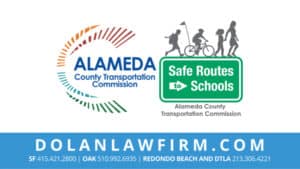Written By: Christopher B. Dolan and Cristina Garcia
This week’s question comes from Wendy L. in Hayes Valley who asks: I am an avid bicyclist and enjoy taking leisurely rides through the City. Since San Francisco has enforced lockdowns due to COVID-19, traffic has decreased and downtown areas feel like ghost towns. However, I read news reports stating that despite the decrease in traffic, the number of cyclists’ deaths remains alarmingly high. I would have expected the number of cyclists’ deaths to decrease as fewer cars are on the roadways. If this is true, what are some of the reasons that bicyclists continue to die at high rates?
Dear Wendy: Thank you for your question. You are correct. Although traffic has significantly decreased since the stay-at-home orders were issued, bicyclists’ deaths remain alarmingly high. According to data from the National Highway Traffic Safety Administration (NHTSA), 2018 was the deadliest year for bicyclists since 1990, with 857 bicyclists’ deaths. In 2019, there was a slight improvement, but the number of fatalities remained at a high 846 bicyclists’ deaths. Due to the disturbingly large number of bicyclists’ deaths in 2020, the magazine Outside committed to tracking every bicyclist death caused by a vehicle collision.
Outside partnered with the nonprofit BikeMaps.org (“BikeMaps”), founded by Trisalyn Nelson, a professor in geographic information science at the University of California, Santa Barbara. BikeMaps has been collecting crowdsourced information about cyclist involved vehicle collisions and traffic hazards such as potholes and road construction in the United States since 2014. Outside and BikeMaps found that in 2020, there were 697 bicyclists who were killed in car crashes. Although this is a decrease from 2018 and 2019, the number of deaths is concerning because it remained incredibly high despite the COVID-19 lockdowns.
According to Outside and BikeMaps, factors contributing to the high rate of bicyclists’ deaths include poorly designed roads, high speed limits, and distracted drivers. For example, they found that the most dangerous road for a cyclist is what Outside and BikeMaps define as an “Arterial Road.” An Arterial road is a busy, multilane street, with traffic signals at intersections and speed limits exceeding 30 miles per hour. Arterial roads account for 65% of the fatal crashes per the data collected and analyzed by Outside and BikeMaps. BikeMaps also noted that cars making unprotected left turns (those with no dedicated left-turn light) are especially dangerous to cyclists and pedestrians because the driver is concerned with oncoming traffic and is not looking out for cyclists or pedestrians.
Another reason for the high number of bicyclists’ deaths in 2020 is that there has been a surge in bicycle sales, which translates to more cyclists on the road. Due to the pandemic, a significant number of people have turned to riding bicycles in order to avoid public transportation and to exercise safely. The NPD Group, Inc., one of the largest market research companies that monitors consumer purchase data, reported that in April of 2020, the cycling industry reported a growth in sales of 75%, generating an unprecedented $1 billion for the month. This surge continued throughout the year. NPD reported that from January through November of 2020, $4.9 billion worth of bikes were sold in the United States. Strava, a popular activity tracking application used by cyclists, reported a 179% increase in membership, further affirming the increasing number of people riding bikes. So, even though there is less traffic, the high number of deaths is impacted by the fact that there are more cyclists on the road.
Based on the data collected by Outside and BikeMaps, fewer cars on the roads does not mean fewer bicycle collisions. For that reason, we encourage all bicycle riders to wear helmets and continue to exercise and bicycle safety.
If you were injured in a bicycle accident as a result of someone’s negligence, you have the right to seek compensation for your economic and non-economic damages. Economic damages include items such as property damage, medical bills, and lost wages; non-economic damages are commonly known as pain and suffering, physical impairment, and inconvenience. It is important to retain a skilled trial attorney to ensure that you receive full and just compensation for your injuries.










